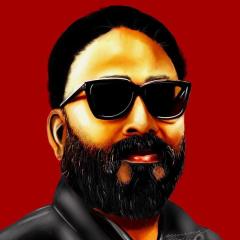-
Tell a friend
-
Topics
-
Posts
-
By தமிழ் சிறி · பதியப்பட்டது
ஆசிய பெருங்கடல் பாதுகாப்பில் இலங்கை : கண்காணிப்பு விமானத்தை வழங்கும் அவுஸ்திரேலியா! ஆசிய பெருங்கடல் பிராந்தியத்தின் பாதுகாப்பு நடவடிக்கைகளில் பணியாற்றுவதற்கு இலங்கைக்கு சிறப்பு கண்காணிப்பு விமானத்தை அன்பளிப்பாக வழங்குவதற்கு அவுஸ்திரேலியா தீர்மானித்துள்ளது. அவுஸ்திரேலிய வெளிநாட்டலுவல்கள் மற்றும் வர்த்தக திணைக்களத்தின் (தெற்கு மற்றும் தென்கிழக்காசிய பகுதி) பிரதி செயலாளர் மிச்சேல் சங் இதற்கான இணக்கப்பாட்டைத் தெரிவித்துள்ளார். மிச்சேல் சங்கின் அண்மைய இலங்கை விஜயத்தின்போது, தேசிய பாதுகாப்பு ஆலோசகர் சாகல ரத்நாயக்கவை சந்தித்து கலந்துரையாடியிருந்தார். இதன்போது ஏற்படுத்திக்கொள்ளப்பட்ட இணக்கப்பாடுகளுக்கு அமையவே சிறப்பு கண்காணிப்பு விமானத்தை அவுஸ்திரேலியா இலங்கைக்கு வழங்குகிறது. சட்டவிரோத குடியேற்றங்கள் மற்றும் ஆள் கடத்தல் என்பவற்றை தடுப்பது உள்ளிட்ட இலங்கையின் கடல் பாதுகாப்பு நடவடிக்கைகளுக்கு முதற்கட்டமாக இந்த விமானம் வழங்கப்படுவதாக மிச்சேல் சங் மேலும் தெரிவித்துள்ளமை குறிப்பிடத்தக்கது. https://athavannews.com/2024/1380118 -
By தமிழ் சிறி · பதியப்பட்டது
ரஷ்ய எல்லை பகுதியில் சுட்டு வீழ்த்தப்பட்ட 68 யுக்ரேனிய ஏவுகணைகள். யுக்ரேன் வான்பாதுகாப்பு ஒத்துழைப்பினை விரைவுபடுத்தவுள்ளதாக பென்டகன் அறிவித்துள்ளது யுக்ரேனுக்கான ராணுவ ஒத்துழைப்பின் ஒரு பகுதியாக வான் பாதுகாப்பு ஏவுகணைகள் அனுப்பிவைக்கப்படவுள்ளதாகவும் அமெரிக்க பாதுகாப்பு செயலாளர் லொய்ட் ஒஸ்டின் தெரிவித்துள்ளார் ரஷ்ய படையினரின் வான் அச்சுறுத்தல் அதிகரித்துவருவதனால் அவசரமாக தமக்கு பாதுகாப்பு ஒத்துழைப்பு தேவைப்படுவதாக யுக்ரென் ஜனாதிபதி வொலேடிமிர் ஸெலன்ஸ்கி அமெரிக்காவிடம் கோரிக்னை முன்வைத்திருந்தார் இந்த நிலையில் யுக்ரேனுக்கு வழங்குவதற்கு தீர்மானிக்கப்பட்ட 60 பில்லியன் அமெரிக்க டொலர் பெறுமதியிலான ராணுவ உதவியில் 6 பில்லியன் பெறுமதியான வான்பாதுகாப்பு உதவித்தொகை அனுப்பி வைக்கப்படவுள்ளதாக அமெரிக்கா அறிவித்துள்ளது இதேவேளை யுக்ரேனில் ரஷ்யா இன்று அதிகாலை பாரிய விமானத் தாக்குதலை மேற்கொண்டுள்ளதாக சர்வதேச ஊடகங்கள் தெரிவித்துள்ளன. இந்த தாக்குதலில் கார்கிவ் நகரில் உள்ள வைத்தியசாலை சேதமடைந்துள்ளதாக தெரிவிக்கப்பட்டுள்ளது ரஷ்ய எல்லை பகுதியில் சுமார் 68 யுக்ரேனிய ஏவுகணைகள் சுட்டுவீழ்த்தப்பட்டதாக ரஷ்ய அதிகாரிகள் தெரிவித்துள்ளனர். https://athavannews.com/2024/1380087 -
எனக்கும் இதே கொள்கை தான், மற்றும் சொந்த இடம் சாவகச்சேரி தான் என்பதால் நீங்கள் சொல்லும் தகவல் உண்மை என இத்தால் அறிவிக்கப்படுகின்றது 🥹
-
இந்தியா மட்டுமா காரணம் ? சீனா, பாகிஸ்தான் , ஐரோப்பா, அமெரிக்கா, மத்திய கிழக்கு நாடுகள் காரணமில்லையா? செப்டம்பர் 11 தாக்குதல் , நீண்டகால சமாதான பேச்சுவார்த்தை, கருணா பிரிவு, தொழில்நுட்ப வளர்ச்சி , குடும்பத்தில் இருந்து ஒருவர் கட்டாயமாக சேர்தல் ( இதில் பல எதிரானவர்களும் இயக்கத்தில் ஊடுருவினார்கள்), காட்டி கொடுப்பு …… 2004 - 2009 காங்கிரஸ் கூட்டணியில் 16 தொகுதியில் திமுக வென்றிருந்தது. அந்த 16 பேரும் ஆதரவை விழக்கியிருந்தால் காங்கிரஸ் ஆட்சி கவிழுமா? பாட்டாளி மக்கள் கட்சி சார்பாக வென்ற 6 பெறும் , தமிழகத்தில் இரு கம்னியூஸ்ட் காட்சிகளிலும் இருந்து வென்ற 4 பேரும் காங்கிரஸ் கூட்டணியில் இருந்தார்கள். திமுக , காங்கிரஸ் ஆதரவை விலக்கினால் பாட்டாளி கட்சியும் ஆதரவை நீக்குமா? இதே கூட்டணியில் இருந்த மதிமுக (4 வேட்பாளர்கள்) 2006 இல் ஆதரவை விலக்கியிருந்தது. அப்படி திமுக, காங்கிரசுக்கு ஆதரவை 2009 ஆரம்பத்தில்விலக்கபூபோவதாக சொன்னால் ( வன்னியை மெல்ல மெல்லமாக சிங்களப்படைகள் 2009 சனவரியில் இருந்து கைப்பற்றியது) , 3 மாதத்தில் தேர்தல் வருகுதுதானே என்பதினால் காங்கிரஸ் தனது இலங்கைக்கு எதிராக செயல்பட்டிருக்குமா?
-
Our picks
-
மனவலி யாத்திரை.....!
shanthy posted a topic in கதை கதையாம்,
மனவலி யாத்திரை.....!
(19.03.03 இக்கதை எழுதப்பட்டது.2001 பொங்கலின் மறுநாள் நிகழ்ந்த ஒரு சம்பவத்தின் நினைவாக பதிவிடப்பட்டது இன்று 7வருடங்கள் கழித்து பதிவிடுகிறேன்)
அந்த 2001 பொங்கலின் மறுநாள் அவனது குரல்வழி வந்த அந்தச் செய்தி. என் உயிர் நாடிகளை இப்போதும் வலிக்கச் செய்கிறது. அது அவனுக்கும் அவனது அவர்களுக்கும் புதிதில்லைத்தான். அது அவர்களின் இலட்சியத்துக்கு இன்னும் வலுச்சேர்க்கும். ஆனால் என்னால் அழாமல் , அதைப்பற்றி எண்ணாமல் , இனிவரும் வருடங்களில் எந்தப் பொங்கலையும் கொண்டாட முடியாதபடி எனக்குள் அவனது குரலும் அவன் தந்த செய்திகளும் ஒலித்துக் கொண்டேயிருக்கும்.- 1 reply
Picked By
மோகன், -
பாலியல் சுதந்திரமின்றி பெண்விடுதலை சாத்தியமில்லை
mooki posted a topic in சமூகச் சாளரம்,
பாலியல் சுதந்திரமின்றி பெண்விடுதலை சாத்தியமில்லை - செல்வன்
Friday, 16 February 2007
காதலர் தினத்தை வழக்கமான தமது அரசியல் நிலைபாடுகளை பொறுத்து அணுகும் செயலை பல்வேறு தரப்பினரும் உற்சாகமாக செய்து வருகின்றனர்.கிரீட்டிங் கார்டுகளையும், சாக்லடுகளையும் விற்க அமெரிக்க கம்பனிகள் சதி செய்வதாக கூறி காம்ரேடுகள் இதை எதிர்த்து வருகின்றனர்.அமெரிக்க கலாச்சாரத்தை திணிக்க முயற்சி நடப்பதாக கூறி சிவசேனாவினரும் இதை முழுமூச்சில் எதிர்க்கின்றனர். தமிழ்நாட்டில் பாமக ராமதாஸ் இதை கண்டித்து அறிக்கை விட்டுள்ளார். பாகிஸ்தானிலும், அரபுநாடுகளிலும் இதை எதிர்த்து பத்வாக்கள் பிறப்பிக்கப்பட்டு அதை மீறி இளைஞர்கள் இதை கொண்டாடியதாக செய்திகள் வந்துள்ளன.-
- 20 replies
Picked By
மோகன், -
-
ஒரு சித்தர் பாடல்
பண்டிதர் posted a topic in மெய்யெனப் படுவது,
எனக்குப் பிடித்த ஒரு சித்தர் பாடல் (எந்தச் சித்தர் என்று மறந்து விட்டேன். கட்டாயம் தேவை என்றால் சொல்லுங்கள் எனது ஓலைச் சுவடிகளை புரட்டிப்பார்த்து பின்னர் அறியத் தருகிறேன்)
நட்ட கல்லைத் தெய்வம் என்று நாலுபுட்பம் சாத்தியே
சுற்றி வந்து முணுமுணென்று கூறுமந்த்ரம் ஏனடா
நட்ட கல்லும் பேசுமோ நாதன் உள்ளிருக்கையில்
சுட்ட சட்டி தட்டுவம் கறிச்சுவை அறியுமோ?
பொருள்:
சூளையில் வைத்துச் சுட்டுச் செய்த மண் பாத்திரத்தில் வைக்கும் கறியின் சுவை எப்படியானது என்று அந்தப் பாத்திரத்துக்கு விளங்குமா? அது போல, எம்முள்ளே எருக்கும் இறைவனை நீ அறியாமல் ஒரு கல்லினுள் கடவுள் இருப்பதாக நம்பி வெறும் கல்லை அராதித்து வழிபடுகிறாய்.- 7 replies
Picked By
மோகன், -
கடவுள் இருக்கிறாரா.............?
வானவில் posted a topic in மெய்யெனப் படுவது,
களத்தில் தற்போது சமயம் சம்ம்பந்தமாக பெரியா கருத்து பரிமாற்றம் நடக்கிறது, அங்கே கருத்தாடு பெரியவர்களே, அறிஞோர்களே உங்களால் இறைவன் இருக்கார் என்று ஆதாரத்துடன் நிரூபிக்க முடியுமா...........? முடிந்தால் நிரூபியூங்கள், நிரூபித்து விட்டு உங்கள் கருத்து மோதலை தொடருங்கள்-
- 46 replies
Picked By
மோகன், -
-
சமூகத்துக்கு பயனுடைய கல்விநிலை எது?
narathar posted a topic in பேசாப் பொருள்,
சமூகத்துக்கு பயனுடைய கல்விநிலை எது?
பேராசிரியர் சோ. சந்திரசேகரன்
இன்று நாட்டில் உள்ள கல்விமுறையையும் அதற்கு அப்பால் உள்ள கல்வி ஏற்பாடுகளையும் நோக்குமிடத்து, பல்வேறு கல்வி நிலைகளை இனங்காண முடியும். அவையாவன: ஆரம்பக்கல்வி, இடைநிலைக் கல்வி, பல்கலைக்கழகக் கல்வி உள்ளடங்கிய உயர் கல்வி, பாடசாலையில் வழங்கப்படும் (1-11 ஆம் வகுப்பு வரை) பொதுக்கல்வி, தொழில்நுட்பக்கல்வி, வளர்ந்தோர் கல்வி என்பன, இவை தவிர கருத்தாக்க ரீதியாக முறைசாராக் கல்வி, வாழ்க்கை நீடித்த கல்வி, தொடர்கல்வி எனப் பலவற்றை இனங்காண முடியும். இவற்றில் ஆரம்பக்கல்வி, இடைநிலைக்கல்வி, உயர்கல்வி என்னும் கல்வி நிலைகளே முறைசார்ந்த (Formal) கல்வியின் பிரதான நிலைகள் அல்லது கூறுகளாகும்.
- 5 replies
Picked By
மோகன்,
-









Recommended Posts
Archived
This topic is now archived and is closed to further replies.